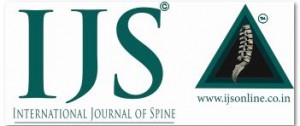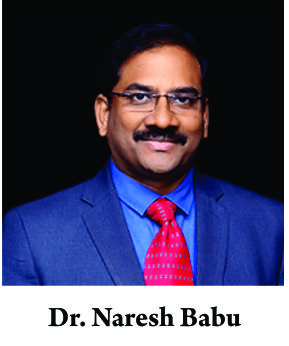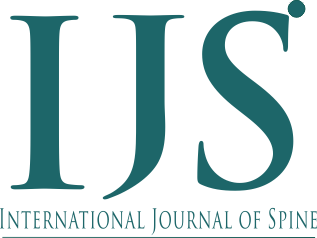A prospective Study of Dural Tears among 430 cases of Lumber Spine Surgery
Volume 5 | Issue 1 | January-June 2020 | Page: 12-15 | Md. Alauddin, A.H.M Tanvir Hasan Siddiquee, Md. Matiur Rahman, Malay Kumar Roy, Shahidul Islam khan, Md. Abdullah Al Mahmud
Authors : Md. Alauddin [1], A.H.M Tanvir Hasan Siddiquee [1], Md. Matiur Rahman [1], Malay Kumar Roy [1], Shahidul Islam khan [2], Md. Abdullah Al Mahmud [3]
[1] Department of Orthopaedic Surgery, Mymensingh Medical College, Mymensingh, Bangladesh.
[2] Department of Orthopaedic Surgery, Bangabandhu Sheikh Mujib Medical University, Dhaka, Bangladesh.
[3] Department of Orthopaedic Surgery, Rangpur Medical College, Rangpur, Bangladesh.
Address of Correspondence
Dr. Md. Alauddin,
Department of Orthopaedic Surgery, Mymensingh Medical College, Mymensingh, Bangladesh.
E-mail: alauddin.md.k49@gmail.com
Abstract
Inadvertent Dural tear (DT) is a possible feared complication of spinal surgery. This is a prospective study of 430 consecutive patients with different types of lumber spinal surgery within the period of ‘January 2010 to December 2018′. Aim of the study is to evaluate incidence of dural tear (DT) with risk factors, compare between DT and non DT group with outcome. Incidence of dural tear were more on patients with older age, degenerative spinal stenosis, spondylolisthesis, re-operative surgery, multiple level surgery and with instrumentation. No significance sex difference found. Postoperative complications were more and outcome poor in DT group in comparison to non DT group. Every spine surgeon should be aware of possible dural tear and must know how to deal it.
Keywords: Dural Tear (DT); DT group; Non DT group.
References
1. SK Kalevski, NA Peev, MD and DG Haritonova. Incidental Dural Tears in Lumber Decompressive Surgery: incidence,causes, treatment, results. Asian JNeurosurg. 2010 janjun: 5(1) : 54-59, PMCID :PMC 3198662.
2. Hiroyuki Yoshira and Daisuke Yonevka.Incidental Dural Tears in spine surgery: analysis of a nationwide data base. Eur Spine J. 2014Feb; 23(2): 389-394.published online 2013 Nov9. PMCID: PMC 3906460.
3. SerdalAlbayrak ,SaetOzturk, Omer Ayden and NecatiUcler. Dural Tear: A Feared Complication of Lumber Discectomy. JTNEPUB_14065_online.pdf.
4. Yossi Smorgick, MD, Kevin C Baker PhD, Harry Herkowitz MD, David Montgomery, MD, Siddhorth A Badve MD, Casey Bachison MD, Steven Ericksen MD and Jeffrey S Fischgrund MD. Predisposing factors for Dural tear in patients undergoing Lumber Spine surgery. J Neurosurg Spine22: 483-486, 2015.
5. S Wolff, W Kheirredene, G Roudhon. Surgical Dural Tears: Prevalence and updated management protocol based on 1359 lumber vertebrae interventions.Orthopaedic& Traumatology: Surgery & Research (2012)98, 879-886.
6. Sin AH, Caldito G, Smith D, Rashidi M, Willis B and Nanda A : Predictive factors for dural tears and cerebrospinal fluid leakage in patients undergoing lumber surgery.J Neurosurg Spine 5 : 224-227,2006.
7. Wang Jc, BohlmanHH,Riew KD : Dural tears secondary to operations in the lumber spine. Management and results after two year minimum follow up of eighty eight patients. J Bone Joint Surg Am 80: 1728-1732, 1998.
8. Deyo RA, Cherkin Dc, Loeser DJ, Bigos SJ, CiolMA: morbidity and mortality in association with operations on lumber spine. The influence of age,diagnosis and procedure. J Bone Joint Surg Am 74: 536-543, 1992.
9. KalevskiSK,Peev NA, Haritonov DG : Incidental dural tear tears in lumber decompressive surgery : incidence, causes, treatment, results. Asian J Neurosurg5 : 54-59, 2010.
10. Luca Proitti, Laura Scaramuzzo, Giusappo K Schiro, Sergio Sessa and Carlo A logroscino : Complications in Lumber Spine Surgery . A retrospective analysis. Indian J Orthop.2013 jul-aug; 47(4):340-345.
| How to Cite this Article: Alauddin M, Siddiquee AHMTH, Rahman MM, Roy MK, khan SI, Mahmud MAA | A prospective Study of Dural Tears among 430 cases of Lumber Spine Surgery | International Journal of Spine| January-June 2020; 5(1): 12-15. |
(Abstract) (Full Text HTML) (Download PDF)
Result of Study Of Transforaminal Lumbar Interbody Fusion Surgery
Volume 4 | Issue 2 | July – Dec 2019 | Bhavesh R. Namsha, Udaygiri H. Meghnathi, Bhavik K. Ahir | Page 2-6
Authors : Bhavesh R. Namsha, Udaygiri H. Meghnathi, Bhavik K. Ahir [1]
[1] Department of Orthopaedics, SSG Hospital & Medical college Baroda, Gujarat, India
Address of Correspondence
Dr. Udaygiri H. Meghnathi,
Department of Orthopaedics, SSG Hospital & Medical college Baroda, Gujarat, India
Email: udaymeghnathi@gmail.com
Abstract
Background: Low back pain is one of the most common reported problem affecting spine. The most common causes of Low back pain are herniated discs, lumbar canal stenosis, degenerative disc disease, spondylolisthesis. Over the past few decades, new treatments and technologies are being implemented to treat spinal disorders to improve patient outcome. The Main objective of study is to access clinical and Radiological result that is obtained with Transforaminal lumbar interbody fusion as a treatment of severe back pain and degenerative disc diseases & to describe outcomes following Transforaminal lumbar interbody fusion (TLIF) surgery.
Methods: A Total of 15 patients who had back pain with degenerative disc disease were operated by TLIF through period from July 2017 to July 2018. Results were measured using the Visual Analogue Scale(VAS) and Oswestry Disability Index (ODI).
Results: Marked improvement in back pain according to VAS. Pre operative Average VAS Score was 7 and post operative average VAS score at 6 month follow up was 1.73. According to ODI score pre operative average ODI score was 66.53 and post operative 6 month ODI score was 18.53
Conclusion: From this study we have concluded that Transforaminal lumbar interbody fusion (TLIF) is a safe and effective method of achieving spinal fusion in patients with degenerative disc disease & low grade spondylolisthesis and thereby reduces back pain and improves patient’s disability score
Keywords: transforaminal lumbar interbody fusion- TLIF, Visual Analogue Scale- VAS, Oswestry Disability Index- ODI, PEEK
| How to Cite this Article: Namsha B R, Meghnathi U H, Ahir B K. Result of Study Of Transforaminal Lumbar Interbody Fusion (TLIF) Surgery. International Journal of Spine July-Dec 2019; 4(2): 2-6. |
(Abstract) (Full Text HTML) (Download PDF)
Management Of Thoracolumbar Fractures in Adults: Current Algorithm
Volume 4 | Issue 2 | July – December 2019 | Vibhu Krishnan Viswanathan, Rishi Mugesh Kanna | Page 10-19
Authors : Vibhu Krishnan Viswanathan [1], Rishi Mugesh Kanna [1]
[1] Department of Orthopaedics, Ganga Hospital, Sai Baba Colony, Coimbatore, India.
Address of Correspondence
Dr. Rishi Mugesh Kanna,
Spine Surgeon, Ganga Hospital, Sai Baba Colony, Coimbatore, India.
E-mail: rishiortho@gmail.com
Abstract
Thoraco-lumbar (TL) fractures are the most common sites for spinal injuries. The severity of these injuries can range from minor, un-displaced fractures amenable to conservative management to highly complex, unstable fractures requiring surgical interventions. There is still considerable ambiguity on various issues related to the management of these vertebral injuries. The current article addresses several crucial questions related to the management of TL spinal fractures. An elaborate search was performed on standard medical search engines including pubmed, google and medline databases using keywords “adult TL fractures”, adult thoracolumbar fractures”, “adult thoracolumbar injuries”, “adult thoracolumbar spinal injuries”, “spinal injuries” and “spinal fractures”. Based on this comprehensive narrative review, we have discussed the key consensus of the existing literature on various aspects of management of these fractures. Currently the most useful system for defining TL fractures is the AO classification system. The best initial imaging modality is computerize tomography (CT) scan, with magnetic resonance imaging (MRI) being the most useful modality in AO type B2 injuries. All patients with AO types B and C injuries require surgical intervention. The current literature is shifting in favor of posterior approach, in view of less complications and morbidity associated with these surgeries. The role of decompression in enhancing neurological recovery and the need for surgical fusion in addition to instrumentation in TL fractures are still controversial. The current literature is strongly against the use of high dose steroids in acute TL fractures with SCI.
Key words: Thoraco-lumbar fractures, AO Spine classification, Imaging modalities, Fracture fixation
| How to Cite this Article: Viswanathan V K, Kanna R M | Management of thoracolumbar fractures in adults: Current algorithm | International Journal of Spine | July-December 2019; 4(2): 10-19. |
(Abstract) (Full Text HTML) (Download PDF)
Headless fully threaded screw (headless screw) versus headed partially threaded screw (headed screw) fixation techniques for odontoid fracture type II- A Case Series
Volume 4 | Issue 2 | July – December 2019 | Kanniah Thuraikumar, Kwong-Lee Wan, Sze Wei Lim | Page 7-9
Authors : Kanniah Thuraikumar [1], Kwong-Lee Wan [1], Sze Wei Lim [1]
[1] Department of Orthopaedics surgeon, Sungai Buloh Hospital, Jalan
Hospital, 47000 Sungai Buloh, Selangor, Malaysia.
Address of Correspondence
Dr. Kwong-Lee Wan,
Department of Orthopaedics surgeon, Sungai Buloh Hospital, Jalan
Hospital, 47000 Sungai Buloh, Selangor, Malaysia
Email: wankwonglee@yahoo.com
Abstract
Odontoid type II fracture is managed with various methods from non-operative such as Halo-vest to operative such as via anterior or posterior approaches and fixation. Posterior fixation of C1-C2 reduces the rotational range of motion significantly. Anterior odontoid fixation is typically done with screws. We present a case series of anterior odontoid screw fixation comparing three cases of headed partially threaded screw (headed screw) to two cases of headless fully threaded screw (headless screw). The headless screw had the advantages of able to be embedded which reduced the risk of prominent hardware and allowed further advancement for more compression effect. The headless screw has better biomechanical strength compared to a headed screw.
Keywords: Anterior odontoid fixation, Odontoid screw, Headless screw
| How to Cite this Article: Thuraikumar K, Wan K-L, Lim S W. | Headless fully threaded screw (headless screw) versus headed partially threaded screw (headed screw) fixation techniques for odontoid fracture type II- A Case Series | . International Journal of Spin | July-December 2019; 4(2): 7-9. |
(Abstract) (Full Text HTML) (Download PDF)
Management of Cervical Myelopathy
Volume 4 | Issue 1 | Jan – June 2019 | Page 16-21 | Naresh Babu J
Authors : Naresh Babu J [1]
[1] Dept of Spine Surgery, Mallika Spine Centre, Hyderabad, India
Address of Correspondence
Dr. Naresh Babu
Department of Spine Surgery, Mallika Spine Centre, 12-12-30 Old Club Road, Kothapet, Guntur & B-58, Journalist Colony, Jubilee Hills, Hyderabad 500033, India.
Abstract
Conservative management has limited role in established cases of cervical myelopathy. However intervention during early stages of the disease when there are minimal symptoms is still controversial. Conservative management in CSM has poor prognostic factors such as presence of myelopathy for more than 6 months, compression ratio of more than 0.4 (dividing sagittal diameter by transverse diameter) indicating severe compression of spinal cord and transverse area of cord less than 40mm2. Conservative treatment is aimed to prevent further neurological deterioration. As observed in the natural history studies, regression of myelopathy is highly unlikely. Surgical intervention is often pursued during the course of CSM depending on the progression of the condition. The degree of neurological recovery depends on pre-operative duration of symptoms. This review provides an overview of cervical myelopathy and focusses on the management and decision making aspect.
Keywords: cervical myelopathy, surgical management, natural history
| How to Cite this Article: Babu N. Management of Cervical Myelopathy. International Journal of Spine Jan-June 2019;4(1):19-21 . |
(Abstract) (Full Text HTML) (Download PDF)
Safety Scores in Spine Surgery – Technique or Technology ?
Volume 4 | Issue 1 | Jan – June 2019 | Page 1-2 | Shailesh Hadgaonkar [1], Ketan Khurjekar [1], Ashok Shyam[1],[2]
Authors : Shailesh Hadgaonkar [1], Ketan Khurjekar [1], Ashok Shyam[1],[2]
[1] Sancheti Institute for Orthopaedics &Rehabilitation, Pune, India
[2] Indian Orthopaedic Research Group, Thane, India
Address of Correspondence
IJS Editorial Officie
A-203, Manthan Apts, Shreesh CHS, Hajuri Road, Thane [W]
Maharashtra, India.
Email: editor.ijspine@gmail.com
The last 2 decades have seen a sea of change in the realm of spine surgery, in India, Asia and the world over. Ever improving implants, surgical techniques and diagnostic modalities have improved our results and reduced the risks involved in spine surgery. However, even today, explaining the risks and complications of spine surgery to a patient sitting in your consultation room is a daunting task- be it regarding a routine Microdiscectomy or a complex spinal reconstruction.
We often see and read of devastating complications and adverse events in spine surgery. And this is extremely disheartening because as surgeons, we attempt to deliver nothing but the best to our patients. What further complicates this intricate formula is the fact that similar surgery for a particular clinical prototype often has widely varied outcomes.
Where Do We Stand Today?
Diagnostic imaging too has come a long way from when Dr. Jules Guerin first attempted to surgically correct scoliosis. In fact, recent literature tells us that even our “State-of-the-art” PET scans and high-resolution Tesla MRI machines are soon to be supplemented by hybrid technologies such as the Fusion PET-MRI which combine the superior soft tissue contrast afforded by MRI scanners with PET-provided real time physiologic and metabolic data. Our understanding of conditions, especially spinal tumors stands to exponentially improve owing to such advancements in imaging.
Neuromonitoring has emerged as a valuable tool in ensuring safety during the intra-operative period. Mainly of use in deformity corrections, Tumor surgeries and other complex spine surgery, it is on its way to becoming a requisite piece of tech in the spine surgeon’s armamentarium.
The arrival of guidance and navigation capabilities in real-time combined with the computing power to reconstruct these into a 3D map has ushered in an era where robots and surgeons today work hand in hand to improve patient outcomes. These technologies have come a long way from merely improving the accuracy of pedicle screw placement. Today, image guided robotics and intra op navigation are being put to use in complex spinal surgeries, spinal revisions, intra-dural tumor resections and even spinal column reconstructions. In addition to improving accuracy, they also aid the surgeon by reducing the physiological element of fatigue from repetitive actions and reducing the exposure to ionising radiation.
Minimally invasive spine surgery techniques are today being used for an ever- expanding list of indications. Despite suffering from a steeper learning curve, reduced intra op and post op morbidity, shorter hospital stay and earlier return to normal life are making MISS a mainstay in the management of many degenerative, traumatic, deformity and neoplastic processes.
It will not be long before molecular engineering ties hands with biomaterial advances and materials such as Bone Morphogenetic Proteins (BMPs) are available on a commercial level for selective cases in spinal fusions. This is likely to eliminate the need for auto and allografts and is expected to even usher in an era of biodegradable spacers. The theoretical possibility of implanting genetically engineered Growth stimulating proteins into degenerated discs to bring about the regeneration of disc material is also being tested in various centres around the globe.
It is truly a great time to be practicing as a spine surgeon these days when the line between science fiction and science are rapidly blurring. The day is not far when the patient and the operating surgeon will no longer even need to be in the same operating room. These new machines and gizmos shall probably end up replacing every aspect of our professional lives. Save the most quintessential of them all, a thorough understanding of the basic principles and biomechanics of the spinal column. For all said and done, in the words of the Wright brothers, “It is possible to fly without motors, but not without knowledge and skill”.
It’s paramount to understand the principles, concepts and surgical exposure to be an expert who will always have an edge to perform these specialized surgeries safely with the combination of the latest advances and technology.
| How to Cite this Article: Khurjekar K, Hadgaonkar S, Shyam A. Safety Scores in Spine Surgery – Technique or Technology? International Journal of Spine Jan-June 2019;4(1):1-2 . |







